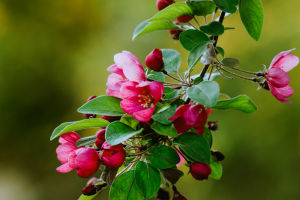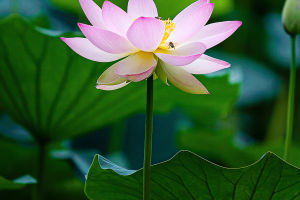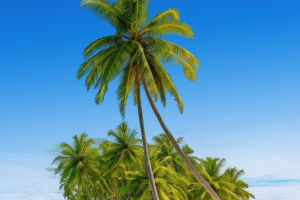
Tropical Plant Contrasts

Although both are part of the palm family, coconut trees and Cambodian palms have notable differences in appearance, ecology, and uses.
This article explores these plants' unique features and roles in tropical ecosystems.
1. Coconut Tree
Originally native to Southeast Asia and the South Pacific, the coconut tree is now widely distributed in tropical and subtropical regions, especially along coastlines.
Coconut trees thrive in hot, humid environments, are salt-tolerant, and highly adaptable. They often grow near coastlines, capable of withstanding high-salinity soils and abundant moisture.
The coconut tree, known for its tall and upright stature, typically grows to over 30 meters tall. Its trunk is smooth and straight, with a 30-40 centimeters diameter. The leaves of the coconut tree are pinnate and can reach lengths of 4-6 meters, each leaf consisting of 200-250 leaflets. The tree crown forms an umbrella shape, with dense foliage concentrated at the top, creating a lush canopy.
Related
 Is it possible to grow a flower tree originating from China? Here is the mysterious answer!
Is it possible to grow a flower tree originating from China? Here is the mysterious answer!
 Palm trees are nature's multifaceted marvels, beautifying our world!
Palm trees are nature's multifaceted marvels, beautifying our world!
 Lotus blooms in water, thriving with grace, nutrition, and healing properties.
Lotus blooms in water, thriving with grace, nutrition, and healing properties.
 Unbelievable! This beautiful plant made man mad!
Unbelievable! This beautiful plant made man mad!
 Let's explore the coconut palm: not just a masterpiece of nature, but also a vital part of human life and culture!
Let's explore the coconut palm: not just a masterpiece of nature, but also a vital part of human life and culture!
 Discovering the Beauty of Wildflowers Along the Line
Discovering the Beauty of Wildflowers Along the Line
The coconut tree's most distinctive feature is its fruit—the coconut. The coconut fruit has an outer layer of green or yellow fibrous husk, a hard inner shell, and contains coconut meat and coconut water.
Revered as the "tree of life," every part of the coconut tree is valuable. The fruit is edible, the meat can be eaten raw, cooked, or processed into coconut oil and coconut sugar.
Coconut water is a natural beverage rich in electrolytes and nutrients. The tree's trunk is used for construction and furniture, the leaves for thatching roofs, weaving baskets, and other crafts, and the shells for making charcoal, bowls, and cups. The coconut tree holds significant economic value and is a vital crop in tropical regions.
In traditional medicine, various parts of the coconut tree are widely used. Coconut oil serves as a moisturizer, and coconut water is used to treat dehydration and gastrointestinal issues. In tropical ecosystems, coconut trees play a crucial role. Their dense canopies provide shade, protecting the understory vegetation and animals. The root systems help stabilize sand and prevent coastal erosion.
2. Cambodian Palm
Primarily found in Southeast Asia, South Asia, and the Pacific Islands, with some presence in parts of Africa and South America, the Cambodian palm typically grows in lowland plains and hilly regions, preferring warm and humid climates with well-drained soils.
The Cambodian palm, being comparatively shorter, generally reaches heights of 10-20 meters. Its trunk is thinner, with a diameter of 20-30 centimeters, and features prominent ring-like leaf scars. The leaves of the Cambodian palm are also pinnate but shorter than those of the coconut tree, typically reaching lengths of 2-3 meters.
The fruit of the Cambodian palm is the areca nut, which is oval or egg-shaped, with a smooth outer skin that turns red or orange when ripe. The areca nut has thick flesh and contains a hard seed inside.
The main economic value of the Cambodian palm lies in its fruit—the areca nut. After processing, the areca nut becomes a popular chewable substance, widely used in Southeast Asia and South Asia. Chewing areca nuts has a long history and deep cultural significance in some cultures, although it is also controversial due to its potential health risks.
The trunk and leaves of the Cambodian palm have various uses. The trunk can be used in construction and furniture making, while the leaves can be woven into household items and crafts. The Cambodian palm positively impacts ecosystems by providing food and habitat for various animals, especially birds and insects. Its fallen leaves and fruits decompose, enriching the soil and contributing to ecological balance.

Conclusion
The coconut tree is renowned for its versatility and high economic value, making it a crucial crop in tropical regions. In contrast, the Cambodian palm is known for its areca nut, which holds a unique cultural and economic position in Southeast Asia and South Asia.
Understanding the differences between these two plants not only helps in better utilizing them but also enhances our understanding and protection of tropical ecosystems.